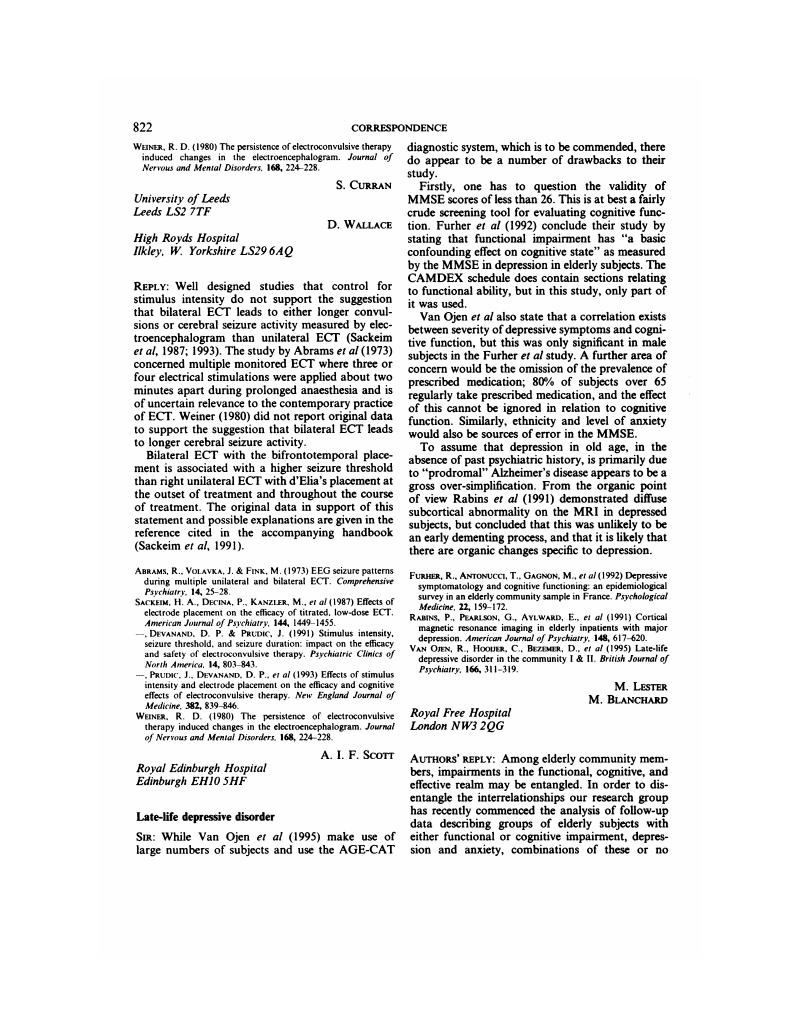No CrossRef data available.
Article contents
Reply
Published online by Cambridge University Press: 02 January 2018
Abstract
An abstract is not available for this content so a preview has been provided. Please use the Get access link above for information on how to access this content.

- Type
- Columns
- Information
- Copyright
- Copyright © 1995 The Royal College of Psychiatrists
References
Abrams, R., Volavka, J. & Fink, M. (1973) EEG seizure patterns during multiple unilateral and bilateral ECT. Comprehensive Psychiatry, 14, 25–28.Google Scholar
Sackeim, H. A., Decina, P., Kanzler, M., et al (1987) Effects of electrode placement on the efficacy of titrated, low-dose ECT. American Journal of Psychiatry.
144, 1449–1455.Google ScholarPubMed
Sackeim, H. A., Devanand, D. P. & Prudic, J. (1991) Stimulus intensity, seizure threshold, and seizure duration: impact on the efficacy and safety of electroconvulsive therapy. Psychiatric Clinics of North America, 14, 803–843.Google Scholar
Sackeim, H. A., Prudic, J., Devanand, D. P., et al (1993) Effects of stimulus intensity and electrode placement on the efficacy and cognitive effects of electroconvulsive therapy. New England Journal of Medicine.
382, 839–846.Google Scholar
Weiner, R. D. (1980) The persistence of electroconvulsive therapy induced changes in the electroencephalogram. Journal of Nervous and Mental Disorders, 168, 224–228.Google Scholar



eLetters
No eLetters have been published for this article.